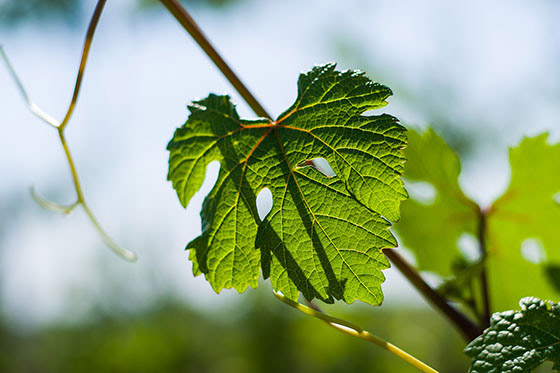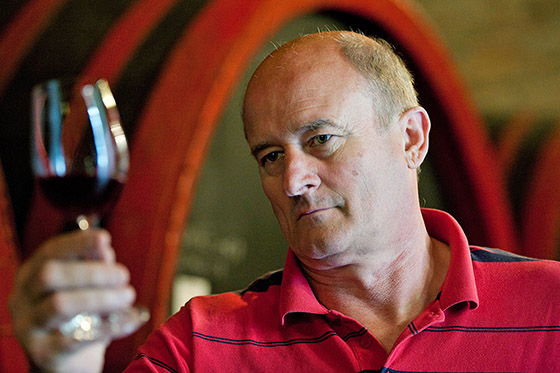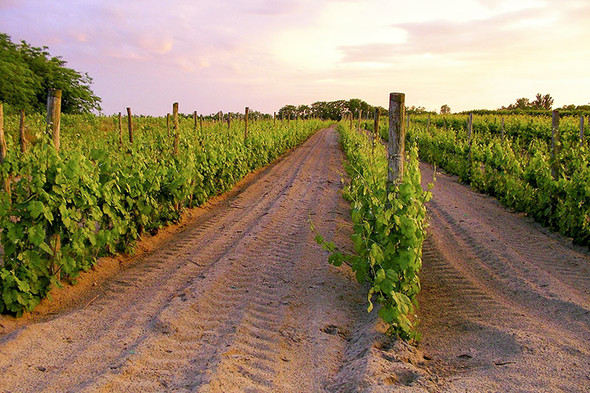Even today, Alföld (the Great Hungarian Plain) is considered by many to be a sandy plain suitable only for table wine making. What do you think of that?
One of your colleagues once wrote that the Alföld terroir character is defeatism, but I do not believe in that or if it is so then I fight against it. Pronouncing these lands to be purely sand is like saying that Hegylaja is purely of loess, though we know that this is only on a small portion of it. We also have yellow sand, brown sand different forest and alluvial soils offering opportunities to different things.
So based on all these, though the producers in the region do not communicate the vineyards, differentiation would make sense?
Not in the sense as it is done for example in Tokaj. But for sure, we are about to understand what grape varieties are suitable for the different areas. Lands of a higher humus content worth of 32-36 gold crowns are completely unsuitable for cultivating fragrant varieties, but are very good to grow Rhine Riesling or Sauvignon Blanc.
There are some legendary lands in this neighbourhood. What do we know about Csábori kétsor?
Higher lands with alluvial soil yield high quality wines. Of course the gold crown value also indicates that cereals can also be grown on these lands.

Yet, based on the above, vineyard cultivation would make sense, right?
Not necessarily. On the one hand it was not a traditional activity in this area. People did not make wines that could be stored for years, they rather preferred those that had to be consumed within one or two years (preferably within one year). This is not a problem though. It is true that we have hardly any seven-year old bottles of cask fermented Ezerjó in a perfect condition but the strength of this region resides in fruity, sometimes fragrant wines that are nice to consume and in their harmonious but not excessive acidity. On the other hand, local lot boundaries have already been established in the 1800s because merchants, and maybe consumers too, already knew that the Kiskőrös and Soltvadkert wines are not similar to one another. Based on different aspects, areas circumscribed for vineyards were larger than the normal size of a dűlő (parcel of vineyard).
So this difference still exists between the same type of wine coming from the same vintage of the two villages?
Yes, but this difference is not sufficiently important therefore dűlő does not make sense here. If the difference is not clear then a classification into dűlős is nothing more than marketing. Here differences depend a lot more on the individual style of wineries, this is what really defines wines and not the land where vine is cultivated.
It may well be purely marketing but it works rather well.
I would not like to talk about the other wine regions but I am convinced that quite frequently we are lead astray in communicating about wines. The main criterion of a good wine is that we like drinking it. We devote considerable efforts to the past but we should not think that consumers are permanent and not changing. What was considered to be a good wine 150 years ago may not satisfy today’s consumers. If winemakers keep an eye on the past all the time, it may easily lead them astray. It does not mean that they should not be proud of their past (especially if there is something to be proud of) but they should also realise that world has changed and keeps changing. For me “historic wine regions” is a red rag to a bull, since usually Alföld is not considered to be one of them, therefore my above argumentation is not taken seriously saying I do not have anything to communicate and that is the reason why I do not do it. In Hungary the first official permit for vineyard planting had been issued in Tiszakürt several hundreds of years before any other wine regions were even mentioned. But just because of this, I would not say that the Kunság wine region is the oldest wine region in the country. We devote too much effort to this though people and their needs are changing and if we fail to produce wines satisfying their needs no matter in how small quantities, it leads to overproduction. Simply because there is no need for such wines.
If this is not the path ahead of Alföld then what would it be?
This is an important question. An important part of my job is to create the image of the wine region and to harmonise production and marketing. It has been proposed that the Danube Wine Region should no longer be granted restructuring aid saying that vineyards will be blighted by frost in a couple of years and we cannot produce real quality either. In spite of the fact that this is not what our achievements at international competitions indicate. In my opinion, the Danube Wine Region, though it has been functioning rather well so far, is capable of achieving much more. I am frequently asked how can three wine regions be smoothly directed in one direction but if we take into account the key rules of forming associations this question makes no sense. Politically, quite often one or two common points may lead to a collation and here 80% of the goals of the three wine regions are the same.

Do you already have ideas?
I think the most important thing is that the scattered wineries in the Danube Wine Region should start communicate jointly that they are in fact working on Alföld. Once a troupe of actors arrived from Kecskemét and when they got out of their bus an actress appeared greatly surprised that she was not in Villány. It turned out that she had been drinking my wines for years but she had never read on the label where the winery was located, so she thought she was drinking a Villány wine. But this cannot continue this way, maybe for a short period we were happy about it but now we have to leave it behind and must be proud of what we have, what we have achieved and what we can achieve!
Would this also mean a joint image?
In case of Kunság, definitely, though I cannot talk about the Danube Wine Region yet. But it would be of immense significance if the 5-6 leading cellars in the Kunság would appear in one pavilion or at least next to each other with a consistent image and communication at a larger exhibition or wine festival.
Would not it be beneficial only to those 5-6 cellars?
It may seem so, but it is not the case. These producers have already proved out but we should also see that without a sound background they, that is us, would not be here. Some of us may live off the prestige, but it is barely enough. People must be kept here, we should offer them jobs and a vision for the future, we have to manage to achieve that they do not emigrate otherwise there will be no one to cultivate the vineyards. Let’s turn this thing a little bit. We do not want to present these 5-6 cellars, but we would like to show through these cellars what Kunság is capable of. That is the way we wish to open the already open door wider to the market, towards the consumers.
In this role, will your job focus only on marketing activities?
Of course not, because I am engaged in several activities at a time in the wine region and these are all interrelated. It is crucial that we represent ourselves in the National Council of Wine Communities because future funds depend on that. I think that as a Chairman my duty is not to dominate people, force them to use the things I have already tried out and to keep repeating my own achievements as a successful wine maker. Relying on my achievements, my goal is to open up the opportunity before them to become successful on their own way. For some of them this is sufficient while others are not clear about their opportunities. In their case we must focus on convincing them that there are opportunities in the Kunság Wine Region in terms of land, plant biology and economy alike for the establishment and operation of a prosperous winery or wine estate. And all this is not for the lower shelves of shops but much more for the middle shelves, in other words our goal is to convince wineries producing high quality wines but working on a lower price level to dare to increase their prices since they would stand their ground there too.






